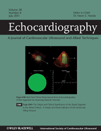Noninvasive Assessment of Left Ventricular End-Diastolic Pressure with Tissue Doppler Imaging in Patients with Mitral Regurgitation
Funding Status: No grant is received for the study.
Disclosure: There is no conflict of interest.
This work was presented in the 2008 ESC Congress (30 August-3 September 2008, Munich, Germany) as poster presentation.
Abstract
Background: The ratio of early transmitral flow velocity to mitral annulus early diastolic velocity (E/Ea) is a widely used noninvasive tool to estimate left ventricular end diastolic pressure (LVEDP). The aim of this study was to explore whether E/Ea ratio was a reliable index for the estimation of LVEDP in patients with mitral regurgitation (MR). Methods: Sixteen patients with nonischemic MR (primary MR group; 6 male, 58 ± 12 years) 51 patients with ischemic MR (secondary MR group; 29 male, 63 ± 9 years) and 29 patients without MR (control group; 19 male, 53 ± 10 years) were consecutively included. The peak transmitral flow and mitral annular velocities during early diastole were measured. LVEDP was determined invasively by left heart catheterization. Results: Primary and secondary MR groups had significantly higher E/Ea ratios and LVEDP than control group. LVEDP significantly correlated with E/Ea ratio in patients with primary MR, but not in patients with secondary MR. Multiple regression analysis revealed that E/Ea ratio was an independent predictor of LVEDP in patients with primary MR. Ten patients with primary MR had LVEDP ≥15 mmHg. ROC analysis demonstrated cutoff values for E/Ea ratios as >10.5 for lateral mitral annulus (sensitivity: 80%, specificity: 66%, PPV: 80%, NPV: 66%) and as >14 for medial mitral annulus (sensitivity: 90%, specificity: 83%, PPV: 90%, NPV: 83%) to predict primary MR patients with LVEDP ≥15 mmHg. Conclusion: E/Ea ratio is still reliable in estimation of LVEDP in primary MR patients while it is not predictive for LVEDP in secondary MR patients. (Echocardiography 2011;28:633-640)




